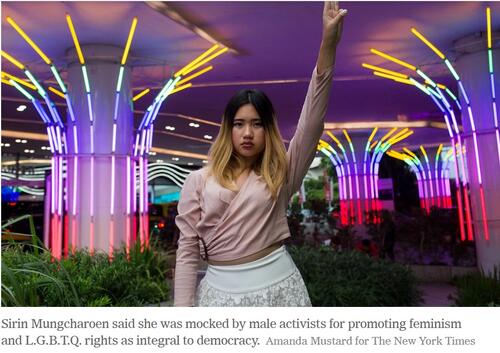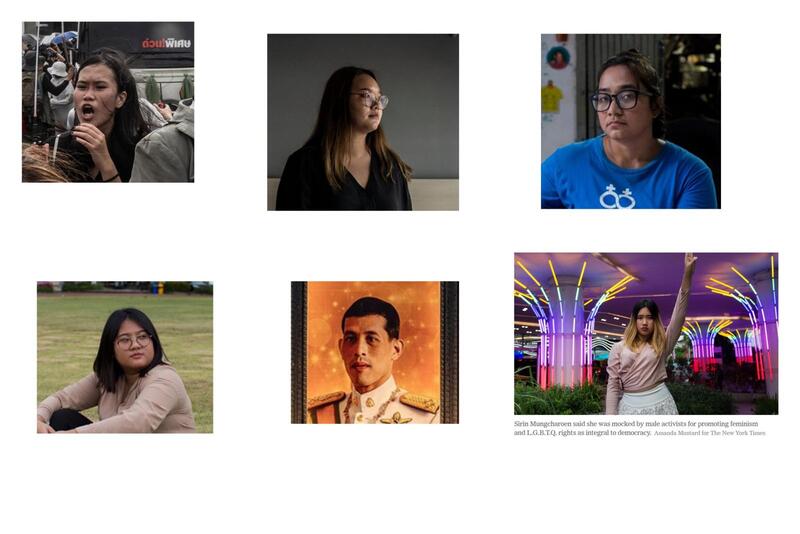Intersections of Feminism and Student Activism in Thailand

Intersections of Feminism and Student Activism in Thailand
A recent article in the New York Times (“Young Women Take a Frontline Role in Thailand’s Protests,” Sept. 24th, 2020) highlights the important role played by young women in the ongoing Thai protest movements. It is fascinating to see how the article describes brave activists who are not just calling out the military but also making important points about the intersection of politics and gender. As the article puts it, “Women, many of them students, are speaking out against a patriarchy that controls the military, the monarchy and the Buddhist monkhood, Thailand’s most powerful institutions.” Indeed, this resonates with a lot of what we have been building up towards in this class—a holistic perspective that engages the intersections of different social, cultural, political and economic phenomena to understand some of the key challenges facing the region. Nevertheless, these brave young women are fighting a difficult battle. The article quotes a 2016 speech by Prime Minister Prayuth Chan-ocha, junta leader and retired general of the Royal Thai Army: “Everyone says that we have to create justice, women and men have equal rights […] Thai society will deteriorate if you think this way.”
There is a lot to say about the entrenched patriarchy in Thailand, but I want to focus on the photos in this article (taken for the NY Times by photographers Adam Dean and Amanda Mustard). While I am not an expert on visual representation, I am particularly struck by the way the images in the piece focus on the faces and eyes of the young activists, and how the framing and poses in the photos convey such seriousness of purpose. In every image, a young woman’s face forms the center of the frame (except one, which centers on a photo of photo, that is, a poster of the current king Vajiralongkorn). While common stereotypical representations of Thailand tend to portray women as smiling ambassadors of the “Land of Smiles,” these photos all depict women engaged in serious, pensive reflection. These are not formal portraits but instead fierce poses that convey a specific register of affect. All of the activists are looking slightly to the side with their heads slightly turned, looking askance as if compelled to direct their attention to the world historic task at hand. One of the women is looking to the side but has rolled her eyes back to the camera, almost glaring at the photographer with an eye-roll, as if saying: you can take this photo, but I have bigger things to attend to right now. Indeed, all of these young women have bigger tasks at hand than smiling for the camera.

Note: Images are cropped screengrabs from the NY Times article. All photos by Adam Dean and Amanda Mustard.
And then, of course, there is the final image in the article, which is actually the one used as the thumbnail image for the home page on online edition of the Times. It depicts a steely-willed activist with her hand raised defiantly in the three-fingered salute from the Hunger Games, a symbol of defiance which has now famously been appropriated by Thai student activists as a symbol of solidarity. It not only harkens to transnational solidarities of the current age, but also recalls the Black Power salute made famous by Tommie Smith and John Carlos in the 1968 Olympics in Mexico City. There are so many layers in this one article, I could go on and on. But let me end with a call out to a great article by Mary Beth Mills on gendered dynamics of Thai labor activism, “From nimble fingers to raised fists: Women and labor activism in globalizing Thailand.” Thinking of Mills’ article while reading this bit of news, we can see solidarities emerging not just across global space, but also reaching back into earlier periods of Thai feminism.